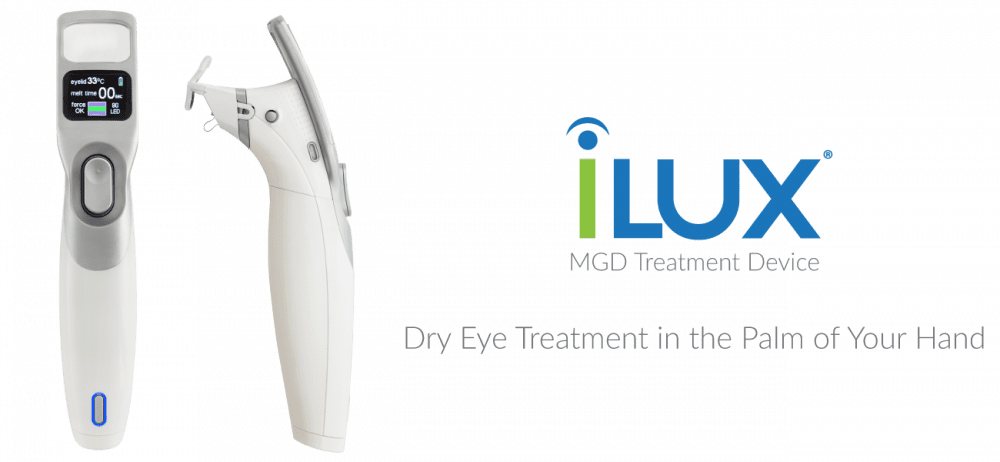

Dry eye, a common eye problem, can be caused by a lack of tear production or rapid evaporation. Tears normally keep the eyes moistened and lubricated. However, stinging, burning, dryness, and redness will result if tears are not sufficient to keep the eyes wet and comfortable. While discomfort is the primary result of dry eyes, infection and corneal scarring may occur if left untreated.
People with dry eyes often complain that their eyes feel gritty, itchy, and dry. Other common symptoms include burning, stinging, redness, stringy mucus, and sensitivity to light. Some people may experience their eyelids sticking together in the morning. People with dry eyes may also have difficulty wearing contact lenses, which normally float on top of the tear film. If not enough tear film is produced, irritation and redness may limit the amount of contact lens use. Surprisingly, watering of the eyes is also a symptom of dry eyes, as excess tears are produced in response to irritation. However, these excess tears are “crying tears” which consists mostly of water. The excess tears lack the oil necessary to keep them from evaporating, and, therefore, do not function to lubricate the eye.
Normally, tear production decreases with age, leaving the delicate eye tissues exposed to the irritation effects of the environment and pollution. Dry eyes are more common with contact lens wearers and women, especially during the change of life or pregnancy. Dry eyes often occur in people with arthritis. Medications and Vitamin A deficiency may also cause dry eyes by reducing tear secretion. In addition, environmental factors such as sun, wind, pollution, dry air from heating or air conditioning and smoke contribute to the occurrence of dry eye. Finally, abnormal eyelid location may cause dry eyes.
If you are suffering from dry eye syndrome, whether it is mild or severe, Atlantic Eye Institute offers a variety of affordable and effective treatments to improve your quality of life. During your initial exam, your eye doctor will work to identify the underlying cause of your dry eyes. From there, he or she will discuss which treatment options are appropriate for you.
People who suffer from dry eyes can take steps to prevent the evaporation of tears. Using a humidifier to add moisture to the air and avoiding smoke, wind and other irritating conditions may provide relief.
A natural relief for some patients suffering from dry eye is to eat foods containing vitamins A, C and E and omega 3 fatty acids which are found in fish and flax seeds.
Over the counter eye drops or artificial tears and ointments help to alleviate mild symptoms of dry eye. Some people who are sensitive to preservatives require special preservative-free artificial tears. An ointment at bedtime may be required in more severe cases.
Restasis® is a prescription eye drop that helps increase your eye’s natural ability to produce tears which may be reduced by inflammation due to chronic dry eye syndrome. After using Restasis regularly for a few months, many patients begin producing more of their tears. As the production of tears increases, patients may begin to experience less of a need for artificial tears.
Xiidra® is the first and only prescription eye drop used to treat the signs and symptoms of dry eye disease.
In some cases, the punctum may be temporarily narrowed or blocked to keep the tears from draining out of the eye quickly. A tiny punctal plug, about the size of a grain of rice, is painlessly placed in the tear drainage canals. The plugs permit only a small percentage of tears to pass into the punctum, thus building up a layer of tears on the surface of the eye. The plugs dissolve over about 3-6 months.
The punctum can also be narrowed or blocked using surgical techniques or lasers. This procedure can usually be performed in the office and is painless, as a local anesthetic is administered before the treatment. Although it is impossible to reopen the punctum once it has been closed, the need to do so is rare.
BlephEx® is a painless, in office procedure in which the doctor very precisely and carefully, spins a medical grade micro-sponge along the edge of your eyelids and lashes, removing bacteria and debris and exfoliating your eyelids. This will help avoid inflammation to the tear glands, preventing chronic dry eye syndrome.

iLux® is another quick and easy, in office procedure in which the doctor uses a handheld device to melt and express blocked meibomian glands. These glands line the rim of your eyelids and are responsible for the supply of meibum, an oily substance that prevents evaporation of the eye’s tear film. Patients who suffer from dry eye can experience significant relief after treatment.
If you are suffering from dry eyes or other eye discomforts, schedule an appointment today. Left untreated dry eye can lead to other more serious conditions including corneal ulcers, infection, and conjunctivitis.